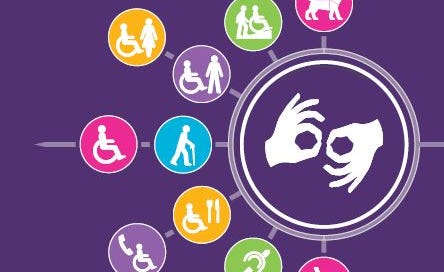Reasonable adjustments passports
Reasonable adjustments “passports” provide
a live record of adjustments
agreed between a disabled worker and their manager
to support them at work.
The key objectives are that the passport is
always kept up-to-date and
makes it unnecessary - if the worker changes roles, or the line manager changes - to re-explain/renegotiate the worker's reasonable adjustments.
A disability access passport details all of the support needs that a disabled person must have in place when working at a different site to their base location. This can be especially useful, for example, when attending a course, a conference, or a residential event. The passport would cover issues like the role of a personal assistant, dietary needs, signing, accommodating a guide dog, needs arising from print disability, and so on.
For example: UNISON disability access passport
Some disabled workers may find it useful to maintain both types of passport.
Early in 2019 the TUC and GMB issued a model policy that includes a model passport but the idea itself is not new. Passports are already in use in some industries and in parts of the civil service where they are referred to as workplace adjustments passports.
Having a passport in place means the worker, and their manager, have a confidential, written record of their disabilities and the reasonable adjustments in place. This can be handed over to a new manager where the member moves roles, or their line manager changes, so they don’t have to re-explain or renegotiate their reasonable adjustments. Going through such a process often causes unnecessary stress and anxiety.
Two of the key principles laid out in the TUC/GMC model policy are
recognising that some disabled people may not have a formal diagnosis or assessment (assistance with an autism diagnosis, for example, can be especially difficult in later life) and
acknowledging that a lack of diagnostic support can be a barrier in the workplace for both workers and employers.
Employers would be expected to, for example
work to eliminate barriers, including prejudice that disabled people face in the workplace and
to raise awareness of the full range of disabilities (including mental health conditions, dyslexia, and other neurodivergent conditions).
The model passport includes:
information on how health conditions or impairments, including fluctuating conditions, interact with barriers both within and outside the workplace
how these impact on our working lives
a template for recording the reasonable adjustments agreed between the worker and their manager
Most importantly: the reasonable adjustment disability passport is “owned” by the worker. They should decide who has a copy and who can see it.
It should be reviewed regularly to ensure that the agreed adjustments are having the intended effects.



